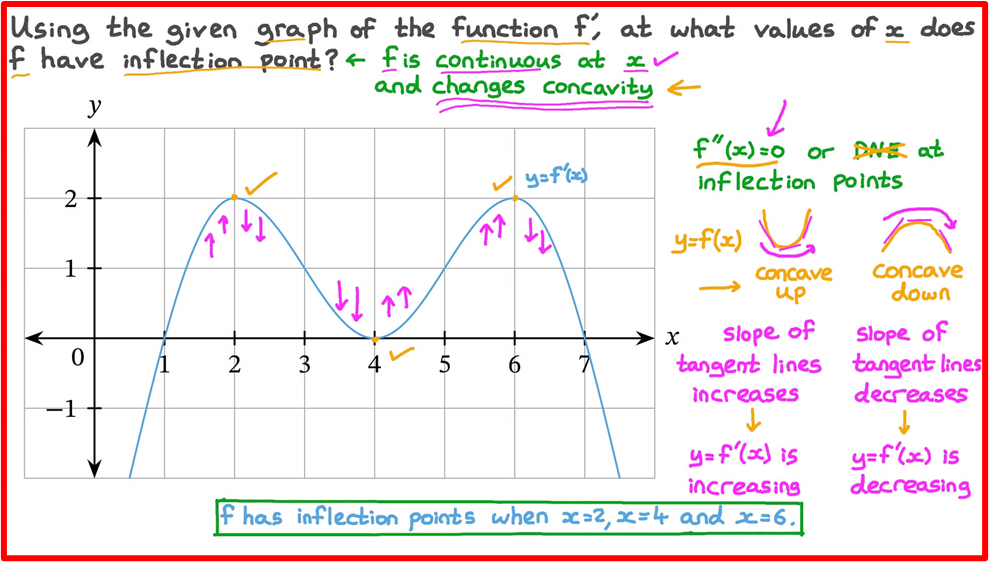with inflection points
“Our nations and our world stand at a genuine inflection point in history,” President Biden said during his recent trip to Europe as he addressed a group gathered to talk about a global technology initiative.
Genuine or not, I am tired of inflection points.
For the past couple of years everyone has been talking about inflection points, and I think we need to quit using the term, whatever it means.
What is an inflection point? The website mathworld, one of my favorites, describes it as “a point on a curve at which the sign of the curvature (i.e., the concavity) changes. Inflection points may be stationary points, but are not local maxima or local minima.” The site goes on to say, “the first derivative test can sometimes distinguish inflection points from extrema for differentiable functions f(x). The second derivative test is also useful. A necessary condition for x to be an inflection point is f^(”)(x)=0. A sufficient condition requires f^(”)(x+epsilon) and f^(”)(x-epsilon) to have opposite signs in the neighborhood of x .”
I may have missed that in the calculus class I did not take.
Of course, that is not what the president means. New Republic columnist Walter Shapiro has written about President Biden’s use of the term. He says, “For Biden, ‘inflection point’ has become his favored verbal method of grabbing people by the lapels and shouting, ‘There’s no going back—we’ve got to change.’”
Shapiro goes on to explain that “until the mid-1990s, inflection point was almost exclusively a mathematical concept, defined as ‘a point on a curve at which the curvature changes from convex to concave or vice versa.’ But then Andy Grove, the founder of Intel, started talking and writing about ‘strategic inflection points’ in business, which he defined as ‘what happens to a business when a major change takes place in its competitive environment.’”
Meriam-Webster now defines an inflection point as “a moment when significant change occurs or may occur: TURNING POINT.”
This is not to criticize the president. He has enough problems without me piling on. But as Shapiro (no mega-MAGA commentator, to be sure) points out, Mr. Biden does tend to overuse the term. And, I suppose, as goes the president, so goes the nation. A quick Google search turns up posts and articles talking about inflection points in the real estate market, the war in Ukraine, the NATO alliance, gun control, LGBTQ rights, renewable energy, and cryptocurrency. Both the Detroit Pistons and the Denver Nuggets were at inflection points as they entered the recent NBA draft.
Brian McLaren, a former pastor who has made a living for the past 20 years warning us of the imminent demise of Christianity, tells us Christianity is now at an inflection point. (His latest book is Do I Stay a Christian? I am pretty sure he answered his question a long time ago.)
Words and expressions often change meaning over time. The charity of King James English doesn’t mean what it meant 400 years ago. Inflection points have migrated from mathematics to business to general discourse. That’s okay.
A thought, then. Let’s be careful about overusing words, especially words that seems to have high emotional or dramatic content. Turning points come along all the time. A very few of them are important. If we are taken by terms such as “inflection point,” save them for the very important times. Haven’t we learned that if everything is a justice issue, nothing is a justice issue. If everything is a part of a conspiracy, then nothing is a conspiracy. If every sign is the sign of the end of something we hold dear, then we will give up on attending to those things that matter.
The Apostle Paul writes that “when the fullness of time had come, God sent his Son, born of a woman, born under the law, in order to redeem those who were under the law, so that we might receive adoption as children.” (Galatians 4:4-5) I guess we might say that was an inflection point. I like the way Paul puts it better.

